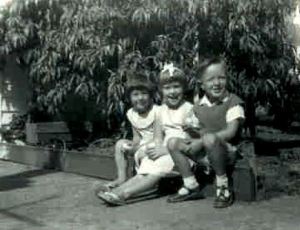I don’t remember when I first ventured into a supermarket. When I was a child we shopped locally; at the butchers for meat and sometimes eggs, at one of the corner stores for our general groceries and at times the bakery where I’d pull the crust from still-warm bread as I walked home. At the butcher’s my Mum would chat about the ‘best cuts’ of the week, find out about where the meat was from and support our local butcher. At one of the two or three corner stores we’d talk about fruits and vegetables with the Greek or Italian shopkeeper and again know where the food we ate originated, generally. On rare occasions we ate South African Smoked Cod that my Dad bought. I can still recall imagining in the map in my mind how this gamey-tasting cod had traveled across the oceans, carried in ships by the Roaring Forties, the trade winds that blow between southern Africa and Tasmania.
But that has all changed. Here in Hong Kong we can source food and products from around the globe, often at premium prices, often not. The fiasco of IKEA’s meatballs is a case in point. Meat, horse or otherwise is sourced in many countries, transported long distances for processing, packaged and sent around the world as cheap food. Here in Hong Kong IKEA meatballs were the same as eaten in 21 European countries as well as Thailand and the Dominican Republic*. Globalization of food, as we know, has been upon us a while.
Recently we had guests. And, as I am at times prone, I like to take guests to places in Hong Kong that tourists tend not to go. So off we went one Sunday hopping on and off ferries until we reached an island renowned for its local seafood served in restaurants lining the seafront. A great lunch it was; time to chat and catch up while watching local fisher-folk landing and selling their catches immediately in front of us while we ate local seafood. After the lunch we wandered about the island and ended up in a ‘wet market’. We were about to leave when we saw a gaggle of people at one stall. We wandered over and what seemed the most popular item for sale was beef; thin marinated beef steaks. I bought some and paid the princely sum of HKD40 for four steaks. That’s about USD 1.30 each. Being a curious person by nature I asked where the beef was from. Expecting to hear China, I was taken aback when I was told ‘Brazil’. Brazil, 18000 kilometres from Hong Kong**.
Imagine that, Brazilian beef for sale on an island in Hong Kong for USD 1.30 per steak. I was amazed. I wondered how this can be possible. I started wondering about the conditions under which the beef was grown, whether forests where cleared to provide such inexpensive meat, what feed was grown for the cattle, what energy footprint was being created, whether this was really ethical.
Last week I was cooking dinner and saw on the packet of chicken breasts a QR code. My phone has an app that scans and reads QR codes, those ubiquitous square squiggles of information. I wasn’t expecting too much when I scanned the code. But the result is below.
Like you, I now know my ‘chicken’ was MALE, slaughtered at 40 days and weighed in at 2.76 kilogrammes. A total surprise! I now know the farmer is Khun Wichaen, the veterinarian is Khun Waiyawoot and the husbandman is Khun Chatchawan, as well as the address of the farm just south of Bangkok. I do wonder too which of the ‘chickens’ in the photo made it into my packet of breasts. Do I need to know this? How does this benefit toward my relationship with the producer, or the local vendor? Is this information worthwhile? Is this information overload? What am I to do with it?
Yesterday, while I was again in our local supermarket, I had choices but little information around those choices. Let’s stick with chicken. On offer where three birds:
- one from Brazil at HKD25 (USD3.25)
- one organic from China at HKD50(USD6.50)
- one organic free-range and from Australia at HKD245 (USD31.60)
Again Brazil has trumped up with low-cost, accessible food. Imagine that. Again though I am wondering about the chain of production of these chickens.
- How can it be possible to feed, house, process and transport these birds 18000 kilometres across the globe?
- How long did it take from slaughter to market?
- What processes did these birds go through to arrive here?
- How fresh are they?
Far too much unknown.
So what information do I want? With messages on a daily basis on the impact of overfishing, nationally sanctioned whaling for ‘research’, environmental destruction of forests to feed our food while many of our species go hungry globally, what do I want to know, what do I need to know?
I have questions, I have some answers. Like some students in our schools I wonder, are my questions the ‘right’ ones to make informed decisions? Are the answers I find accurate? I feel too much removed from what I eat, how it got to me, how it was created.
I can though start with a wondering, “is this is sustainable?”
*http://www.scmp.com/news/hong-kong/article/1158956/ikea-expands-meatball-recall-hong-kong
**http://www.distancefromto.net
Header image: http://blog.foreignpolicy.com/files/images/090410_globalizationB.jpg



